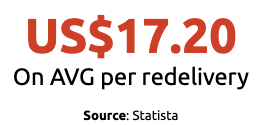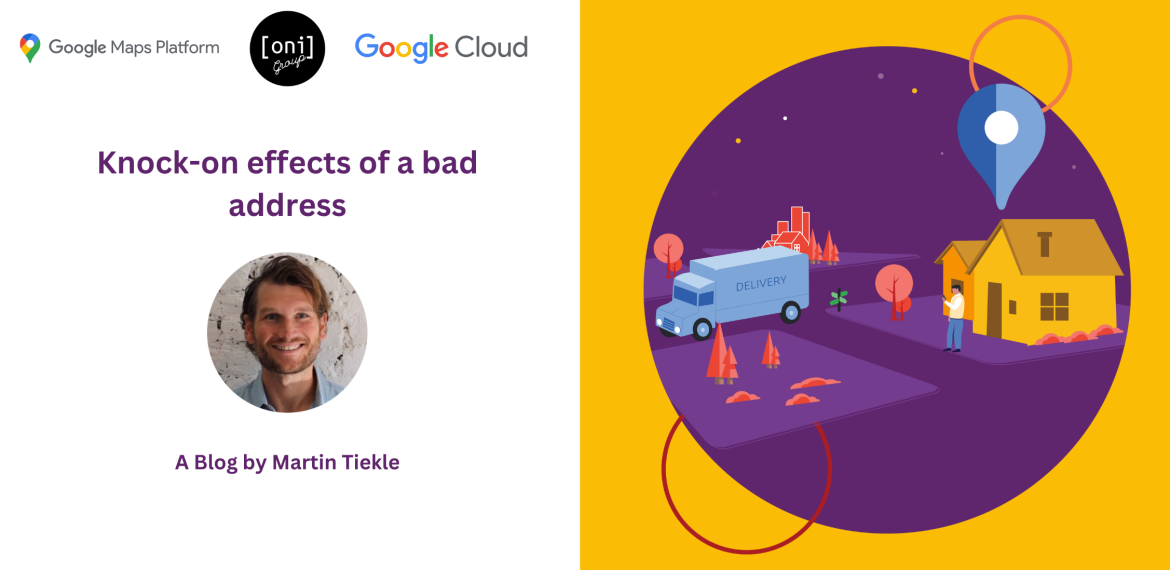Knock on effects of a bad address or the Network effect of a bad address.
Imagine you are the manager of an entire train network. Your job is literally to transport millions of people every day from home to work and back again. Now imagine one of the trains gets delayed, this is technically only a small part of the total services but the impact can be extensive. One bad train, on a single line, can cause massive delays across the entire network. This is the network effect.
Now this is not new to anybody but what if we took this concept and applied it to retail, ecommerce, logistics and delivery. There is one common denominator that has a similar negative network effect. Bad addresses.
In this article we’re going to demonstrate all the knock on effects of a bad address, the chaos it can cause both customers and businesses, the costs to businesses and finally how to solve it.
How does it affect the customer?
Here comes the irony. The customer is always right… except in some cases with addresses. Customers are in most cases both the cause of bad addresses and usually the first to complain. A double edged sword. This is because of the way we ask customers to provide address information. Some check out experiences have no validation at all which breeds bad address data out. Other check out experiences with multiple (compulsory*) input fields force customers to shoehorn an address into what businesses think the address should be. Remember different cities and areas can have completely different address structures so a uniform address structure is not always possible.
So what invariably happens when a bad address is provided by the customer? Usually two things, manual validation from operations via phone calls/SMS to the customer and an expensive support ticket from, you guessed it, the customer, complaining about missed delivery SLAs or worse a complete redelivery. How do you think this affects customer churn? According to the “Consumer Research Report” by Metapack, 38% of consumers would never shop with the business again. This is one bad experience and that’s the tip of the iceberg, it also reduces potential new customers.

How about the impact for businesses?
So the customer is a bit annoyed but the product was actually delivered. Success right? Not really. Let’s examine how much that bad address actually cost the business?
This analysis falls into 2 buckets:
- Businesses that have no address validation
- Businesses that use some form of address validation
The latter has at least some form of filter to reduce the bad addresses impacts, this is generally through a service such as Google AutoComplete, Experian or Shopify. However, did you know that most companies actually fall into the first category? This is because by the time they receive the addresses (from an ecommerce/retail provider or a 3rd party) they are already bad! So what steps can they take? Unfortunately, it’s a 5 step manual process:
- Process the address against a validated address DB (Usually a 3rd party service)
- Analyse the response to see if there is a match, if there is, great… but depending on the market this can be as low as 30%.
- Manually review the address (usually via a full time operational agent)
- Call or SMS the customer to validate and confirm the address (between 43 seconds & 10 minutes - Source: LiveAgent)
- Attempt the delivery process
Now here is where it gets interesting. Those 5 steps cost on average around US$5.50 (Source: LiveAgent). This is assuming that the delivery was actually successful. What if it wasn’t? What if we went to the wrong address or the customer was not home to collect it?
The current AVG On Time Delivery Rate in the US (Meaning meeting set delivery SLAs) according to SupplyChainDive is 85.1%. Meaning a whopping 15% are late. This is the exact cause of customer support tickets (eg “Where is my package?!”).
So how much does this cost? To acknowledge, contact & resolve approximately:

Now in most cases by this stage the package has been delivered and the support case closed. However, here is an alarming statistic: the average first time delivery attempt rate is 90% in the United Kingdom, a developed market (Source: Cap Gemini). Meaning 1 out of every 10 deliveries need to be delivered at least twice (imagine what this is in emerging markets with poorer address data). On top of this, Elogii estimates; delivery vehicles cost businesses $2.84 per mile (or $1.75 per kilometer). This equates to:

So one bad address (if we total it up) can cost between US$5.50 to US$25.20. With a bad address rate of only 5%, this is a margin destroying cost to the business of:

So what’s the solution?
- Have a look at your organisation’s data to see the real cost of bad addresses
- Review the current life cycle process of a bad address (look for manual interventions) and exception management for unsuccessful deliveries (Redeliveries etc)
- Evaluate any existing address validation technology and pinpoint the true Total Cost of Ownership (Cost per validation, how often is updated, does it cleanse addresses or provide zero results).
Lastly, speak with the address experts at OniGroup so they can show you how to solve this for good with both customer point of capture and a multi-channel backend ecosystem of address validation technology.
How do you get access to these technologies today?
At OniGroup we are location experts and in particular for Google Maps Platform. If you’re an existing customer your account manager will be in touch with you to set up a free workshop on each of the above. For everyone else, don’t stress, we want to work with you leveraging these new technologies, today.
Join the exclusive Location Intelligence Program to learn about:
• Enhancing user experiences: Making exploring and navigating the world more immersive, intuitive, and informative.
• Empowering developers: Providing advanced tools to build location-based solutions that address diverse needs.
• Supporting businesses: Offering features that optimize operations and enable data-driven decision-making.
Join our waiting list
